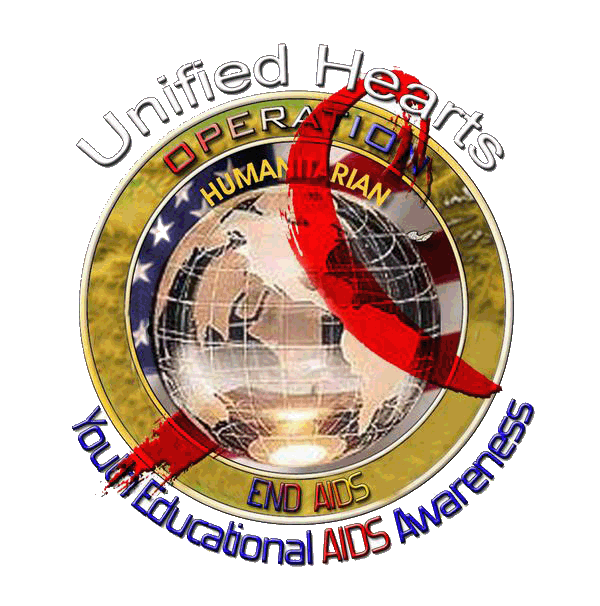
Allow us to introduce ourselves; we are a group of individuals passionate toward educating our future generation the means in which to prevent HIV/AIDS; and to be compassionate and understanding toward those living with it.
For over three decades the human race has battled against one of the most dreadful disease known as HIV/AIDS. Although we have made great strides in bringing awareness to the destructive force of this disease, we have yet to reinforce the education on the means in which to prevent it. Here is where Unified Hearts come to life.
We focus on educating younger generations on the prevention of HIV/AIDS. With special events, concerts, and endeavours, we grasp the attention of our youth. This strategy has been proven to be effective.
In the year 2005, Unified Hearts launched “The Youth in Search of a Cure Concert”, it is the Youth addressing the Youth on this pressing issue—an unprecedented event so unique in every aspect geared toward our generations to come.
“The Youth in Search of a Cure Concert” is simply the youth coordinating a most worthy event for the youth, our motto is “who better than the youth to address the youth on such a pressing issue”.
“The Youth in Search of a Cure Concert” will be celebrating its sixth year. Its predecessors proved to be amazingly effective towards our community and surrounding cities. This event gives an exceptional opportunity where the youth can unite towards a most worthy cause, and in turn, they will gain the knowledge of HIV/AIDS prevention and understanding.

The Surgen General..
The Surgeon General's reports on Acquired Immune Deficiency Syndrome, or AIDS, showed the federal government's uncertain response to a new, deadly, and frightening epidemic. By educating Americans about the causes, transmission, consequences, and prevention of AIDS, the Surgeon General materially changed medical and public conceptions of the disease. Initially AIDS had been understood in analogy to catastrophic but cyclical outbreaks of the past, such as yellow fever, which had been fought with mandatory screening, quarantine, and other severe public health measures. The Surgeon General helped redefine AIDS as a chronic, preventable disease, best countered with voluntary screening and drug treatment, and one that allowed the full integration of carriers into society.
In June 1981, the Centers for Disease Control (CDC), an agency of the U.S. Public Health Service, reported on five homosexual men admitted to Los Angeles hospitals withPneumocystis carinii, an often fatal form of pneumonia so rare that few clinicians in the United States could identify it. A month later, the CDC reported on 26 cases of young homosexual men diagnosed with an equally rare form of cancer, Kaposi's sarcoma. Epidemiologists soon realized that these rare diseases were manifestations of a new, underlying, and contagious disease, soon called Acquired Immune Deficiency Syndrome. AIDS was caused by a virus, identified in 1983 and now called Human Immunodeficiency Virus, which spread by blood or sexual contact, or through transmission during pregnancy. By the summer of 1985, nearly 12,000 cases of AIDS had been reported nationwide, with almost 6,000 deaths.
The first victims of AIDS were homosexual men and intravenous drug users. These findings enmeshed AIDS in the moral politics of the first Reagan administration. Reagan's domestic policy staff feared that a discussion of AIDS would involve the administration in explicit debates over sexual practices and drug use, likely to alienate mainstream voters. So a coordinated public response was lacking. Surgeon General C. Everett Koop did not become a member of the Assistant Secretary's Executive Task Force on AIDS until 1985, four years after the CDC first noted its occurrence. He was not asked to produce a report on AIDS until early 1986, a belated response to the scale of the epidemic.
The Surgeon General's Report on Acquired Immune Deficiency Syndrome was released in October 1986, to both great acclaim and instant criticism. Rather than delegate the report's preparation, as is often done, Koop wrote the report himself in the basement of his home, with the input of only a dozen close advisers. In candid but dispassionate language, the report reviewed the symptoms of the disease and its modes of transmission (through sexual intercourse, sharing of contaminated needles among drug users, from infected mother to child during pregnancy or birth, and through transfusion of contaminated blood or blood products). The report reassured Americans that AIDS could not be spread casually, so that public schools and facilities were safe. It called for a nationwide education campaign--including early sex education in schools, for increased use of condoms, and for voluntary testing, arguing that mandatory testing would drive AIDS sufferers underground, to the detriment of their rights and the public's health. A brochure summarizing the report was sent to 107 million American households in 1988. A workshop on children with AIDS was held under the auspices of the Surgeon General in 1987, and a follow- up report was published in 1992 under Surgeon General Antonia Novello.
The 1986 report did not resolve the political and moral debate over AIDS. Conservatives charged that the measures recommended in the report would corrupt schoolchildren by teaching promiscuity. Against the report's recommendations, some politicians called for mandatory AIDS testing. AIDS activists, on the other hand, hailed the report for launching an open, national discussion about the pandemic, and thus putting public health ahead of politics. The development of national AIDS policies in the United States was highly controversial, leaving many economic and legal issues raised by AIDS to activists, health insurers, local and state governments, courts and AIDS patients themselves. However, the report on AIDS was crucial in changing public understanding of the disease. First regarded as a devastating pandemic necessitating mandatory testing and quarantine, the public now conceived of AIDS as a chronic disease, treatable and survivable, and one that did not exclude its carriers from full participation in society.

